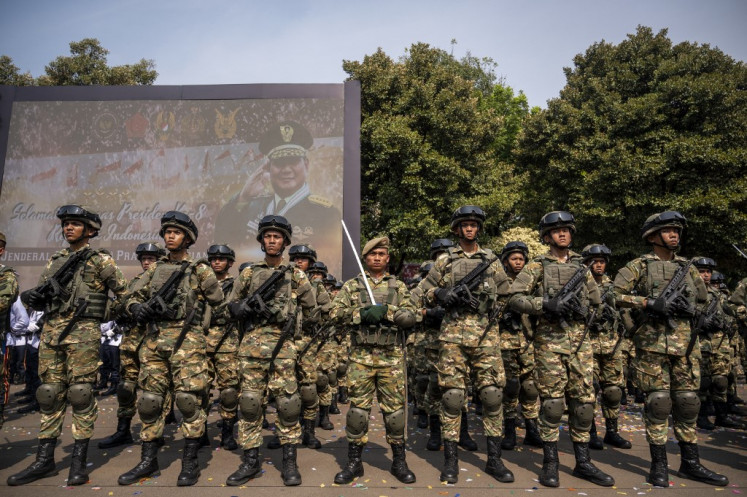200 million people moved to cities in East Asia in decade: World Bank
Almost 200 million people in East Asiamoved to urban areas in the decade to 2010, the World Bank said Monday,creating a massive challenge to the region's planners
Change text size
Gift Premium Articles
to Anyone

A
lmost 200 million people in East Asiamoved to urban areas in the decade to 2010, the World Bank said Monday,creating a massive challenge to the region's planners.
About 36 percent of people in the region -- which under the World Bank's definition includes Northeast and Southeast Asia -- were living in urban areas as of 2010, up from 29 percent ten years before.
This suggests the region will see decades more of further population shifts, it said in a report released Monday.
The report contains data gathered through satellite imagery and "geospatial" mapping which the bank said should help planners ensure that policies will benefit a larger number of those moving to cities, especially the poor.
"For the first time, the data compares urban areas and their population in a consistent manner across East Asia, providing governments and local leaders with a better understanding of the shape and scale of the growth so they can get urbanization right -- creating opportunities for all," the bank said.
The data shows that urban areas in East Asia expanded at an average rate of 2.4 percent per year during the decade, with urban land reaching 134,800 square kilometers in 2010.
Urban populations rose at a faster rate of 3.0 percent, according to the report, which also found a direct link between urbanization and income growth.
The region had 869 urban areas with more than 100,000 people, including eight "megacities" with a population of over 10 million as of 2010, according to the report.
China's Pearl River Delta, which includes Guangzhou, Shenzhen, Foshan and Dongguan, has overtaken Tokyo as the world's largest urban area both in size and population, it said.
As of 2010, the report stated that there were 42 million inhabitants in the Pearl River Delta, a population larger than that of Argentina, Canada or Malaysia.
World Bank urban development expert Abhas Jha said he hopes the report will push policy makers to a shift from a "car centric" to a "people centric" strategy in growing cities like Jakarta and Bangkok.
"Massive traffic congestions in urban cities calls for a new paradigm shift in urban planning to move from a car-centric to people-centric urban plan," he told reporters in a video conference from Singapore, adding that a more efficient public transportation system could be one way to alleviate this problem.
The report however said that despite the population shift, data shows that only less than one percent of the total area studied is urbanized.
"Only 36 percent of the total population is urban -- suggesting that the region's urban expansion has only just begun," it said. (+++++)









